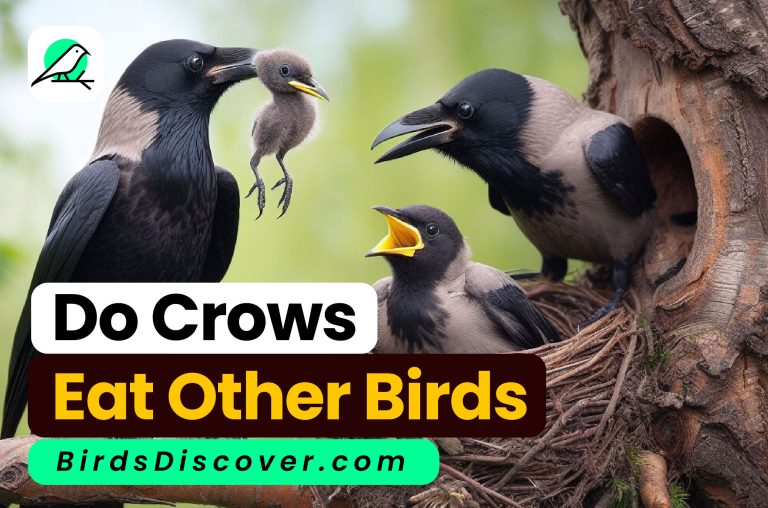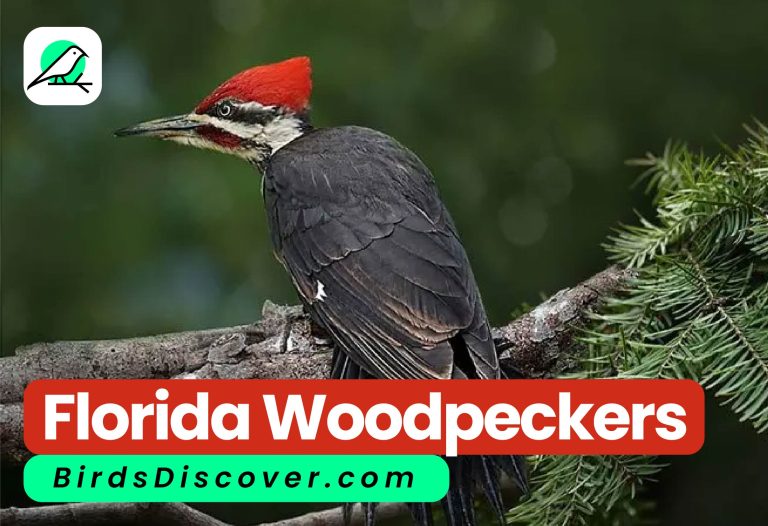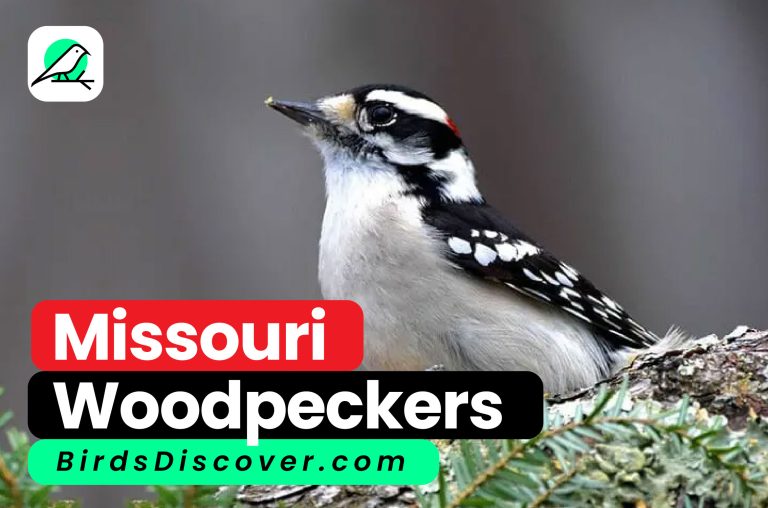20 Orange Belly Birds Biography, Sounds
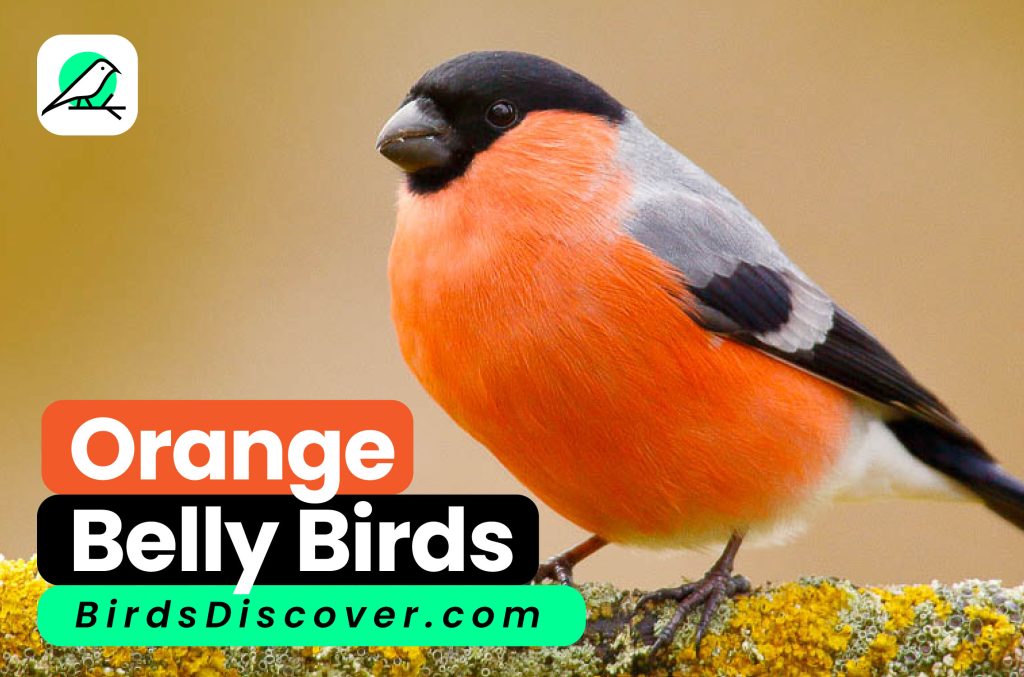
Orange Belly Birds
Orange-bellied birds exhibit a vibrant array of colors and characteristics across various habitats worldwide. Ranging from tropical rainforests to coastal areas and mangroves, these birds dazzle with their vivid plumage and unique behaviors. With sizes averaging between 6 to 10 inches, they play vital roles in ecosystem dynamics, primarily as pollinators and seed dispersers. Despite their small stature, Orange-bellied birds have significant impacts on biodiversity and ecosystem health. However, habitat loss and fragmentation threaten their populations, emphasizing the importance of conservation efforts to protect these charismatic avian species for future generations to admire and enjoy.
Baltimore Oriole
The Baltimore Oriole (Icterus galbula), native to North America, is a stunning bird with vibrant orange and black plumage, measuring 7-8 inches in length. Found in woodlands and urban areas, it adds a splash of color with its melodious songs and energetic foraging behavior. Feeding on insects, fruits, and nectar, it’s a valuable pollinator. Its distinctive hanging nests, intricately woven from plant fibers, showcase its remarkable nesting skills. Despite facing threats like habitat loss, conservation efforts aim to preserve this iconic species, ensuring future generations can continue to admire its beauty and song.
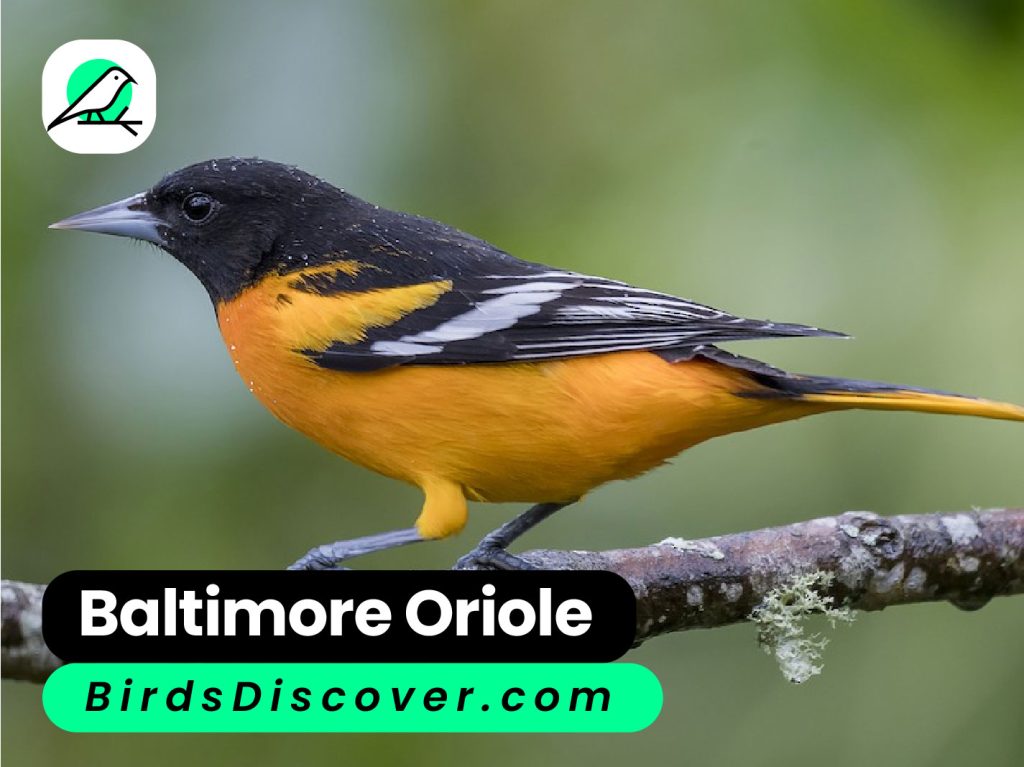
Baltimore Oriole Biography, Sound
| Attribute | Description |
|---|---|
| Scientific Name | Icterus galbula |
| Common Name | Baltimore Oriole |
| Size | 7-8 inches in length |
| Habitat | Woodlands, urban areas |
| Range | North America |
| Plumage | Vibrant orange and black |
| Diet | Insects, fruits, nectar |
| Nesting | Intricately woven hanging nests |
| Behavior | Melodious songs, energetic foraging, valuable pollinator, skilled nest builder |
| Conservation | Faces threats like habitat loss, conservation efforts in place for protection |
American Robin
The American Robin (Turdus migratorius) is a widespread bird native to North America. Recognizable by its red breast and brownish-gray plumage, it measures 9-11 inches. Found in various habitats, it forages for insects, worms, and fruits. Its cheerful song heralds the arrival of spring across its range.

American Robin Biography, Sound
| Attribute | Description |
|---|---|
| Scientific Name | Turdus migratorius |
| Common Name | American Robin |
| Size | 9-11 inches in length |
| Habitat | Woodlands, parks, suburban areas |
| Range | North America, widespread |
| Plumage | Brownish-gray upperparts, orange-red breast |
| Diet | Insects, worms, fruits |
| Nesting | Cup-shaped nests made of grass and mud, usually placed in trees or shrubs |
| Behavior | Migratory, sings melodious songs, hops on ground to forage, often seen in flocks |
| Conservation | Common and stable population, not of conservation concern, protected by law |
Orange Breasted Sunbird
The Orange-breasted Sunbird (Anthobaphes violacea) is a small bird found in Southern Africa. Recognizable by its iridescent orange belly and dark plumage, it measures 4-5 inches. It frequents fynbos habitats, where it feeds on nectar from flowers, contributing to pollination and biodiversity in the region.
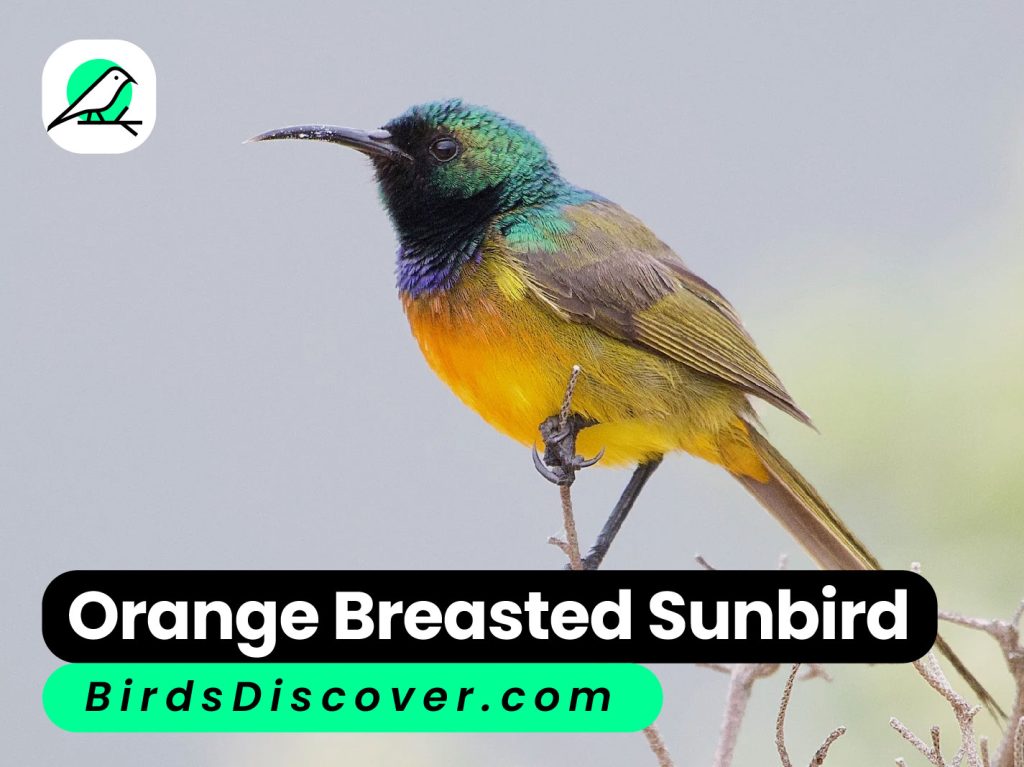
Orange Breasted Sunbird Biography, Sound
| Attribute | Description |
|---|---|
| Scientific Name | Anthobaphes violacea |
| Common Name | Orange-breasted Sunbird |
| Size | 4-5 inches in length |
| Habitat | Fynbos habitats |
| Range | Southern Africa |
| Plumage | Dark plumage with iridescent orange belly |
| Diet | Nectar from flowers |
| Behavior | Feeds on nectar, contributes to pollination and biodiversity |
| Conservation | No significant conservation concerns, but habitat loss threatens populations |
Flame Robin
The Flame Robin (Petroica phoenicea) is a small bird native to Australia, distinguished by its fiery orange-red breast and belly. Measuring 6-7 inches, it’s sought after by birdwatchers for its striking appearance. It frequents woodlands, where it forages for insects and displays its vibrant plumage during the breeding season.
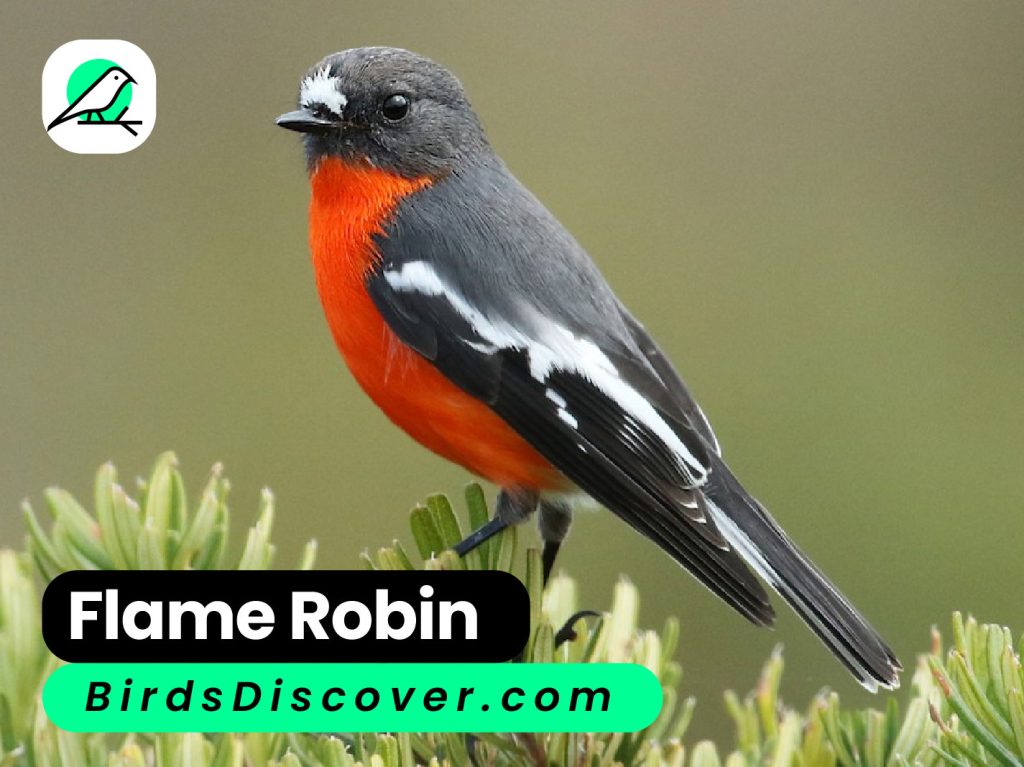
Flame Robin Biography, Sound
| Attribute | Description |
|---|---|
| Scientific Name | Petroica phoenicea |
| Common Name | Flame Robin |
| Size | 6-7 inches in length |
| Habitat | Woodlands, forests |
| Range | Australia |
| Plumage | Fiery orange-red breast and belly |
| Diet | Insects, berries, fruits |
| Behavior | Sought after by birdwatchers, vibrant plumage during breeding season |
| Conservation | Not of conservation concern, but habitat preservation is crucial for its survival |
Hooded Oriole
The Hooded Oriole (Icterus cucullatus) is a striking bird native to western North America. Its bright orange plumage and black mask distinguish it. Measuring 7-8 inches, it inhabits arid habitats, adding color with its melodious calls. It’s admired for its beauty and adaptability in suburban and urban areas.
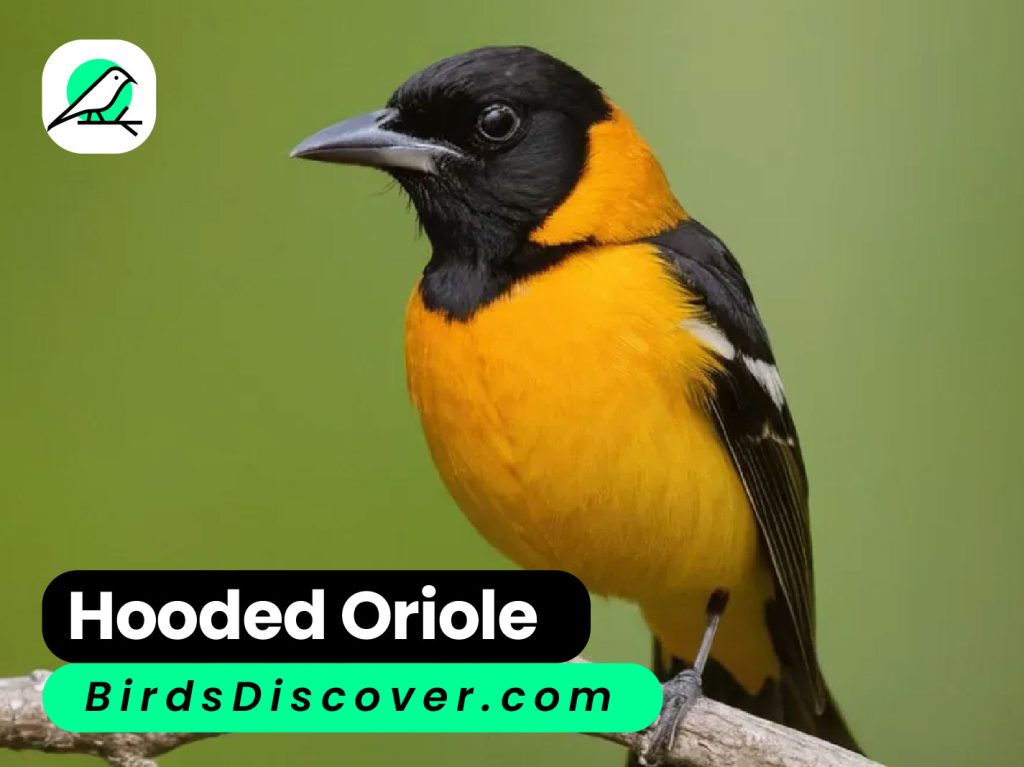
Hooded Oriole Biography, Sound
| Attribute | Description |
|---|---|
| Scientific Name | Icterus cucullatus |
| Common Name | Hooded Oriole |
| Size | Approximately 7-8 inches in length |
| Habitat | Western North America, including desert, scrubland, and urban areas |
| Range | From southwestern United States to Central America |
| Plumage | Adult males have bright orange plumage with a black hood, females are duller |
| Diet | Feeds mainly on nectar, insects, and fruits |
| Nesting | Constructs hanging, pendulous nests from fibers and grass, often near palms |
| Behavior | Agile and acrobatic, often seen flitting among flowers and foliage, melodious calls |
| Conservation | Populations are stable, common in suitable habitats, no major conservation concerns |
Rufous Hummingbird
The Rufous Hummingbird, known for its fiery orange plumage and swift aerial acrobatics, is a migratory marvel of North America. With a wingspan of merely 4 inches, it traverses over 3,000 miles annually from breeding grounds in Alaska to wintering sites in Mexico, a testament to its remarkable endurance and adaptability.
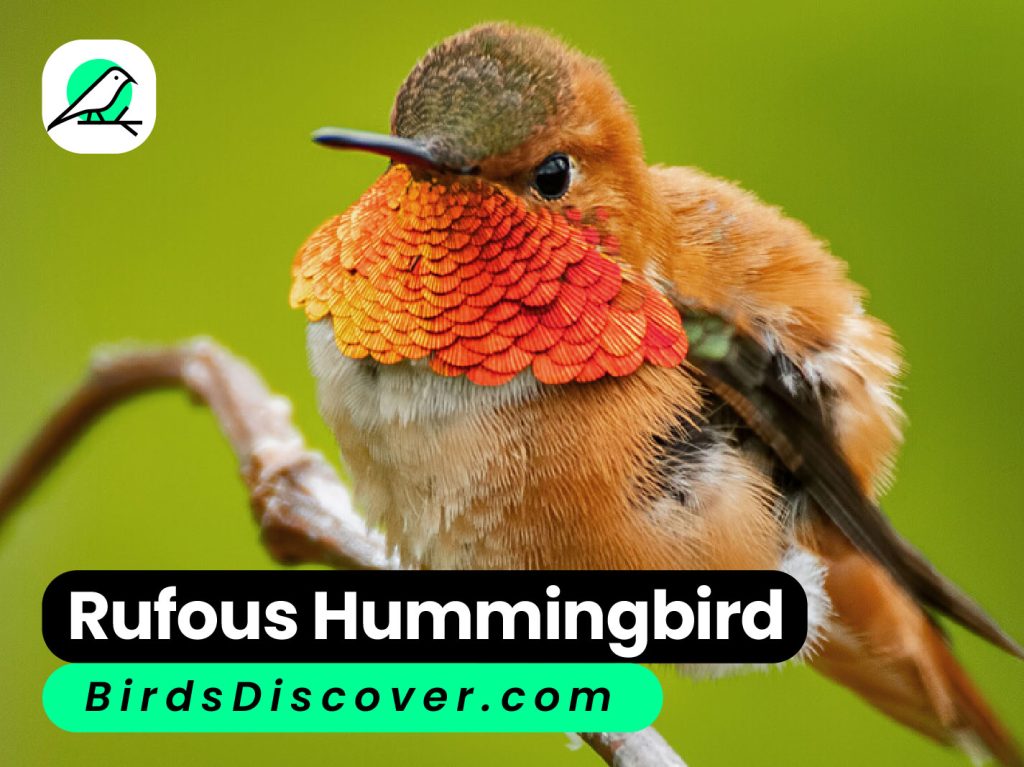
Rufous Hummingbird Biography, Sound
| Name: | Rufous Hummingbird |
|---|---|
| Species: | Selasphorus rufus |
| Habitat: | Western North America, from Alaska to Mexico |
| Size: | Length: 3-4 inches, Wingspan: 4-4.5 inches |
| Plumage: | Male: Brilliant orange-red throat, brownish back. Female: Greenish-gold with speckles. |
| Diet: | Nectar from flowers, small insects |
| Behavior: | Highly territorial, aggressive towards intruders. Migrates annually between breeding and wintering grounds. |
| Lifespan: | Average 3-5 years |
| Notable Traits: | Exceptional aerial agility, long migration routes, iridescent plumage. |
| Conservation Status: | Least Concern (Population stable) |
| Significance: | Vital pollinator, indicator species for ecosystem health. |
| Fun Fact: | Can beat wings up to 52 times per second. |
Northern Cardinal
The Northern Cardinal, with its vibrant crimson plumage and striking black mask, is a beloved songbird native to North America. Found in woodlands, gardens, and urban areas, its melodious song fills the air year-round. Symbolizing vitality and beauty, it captivates with its charm and resilience in various habitats.
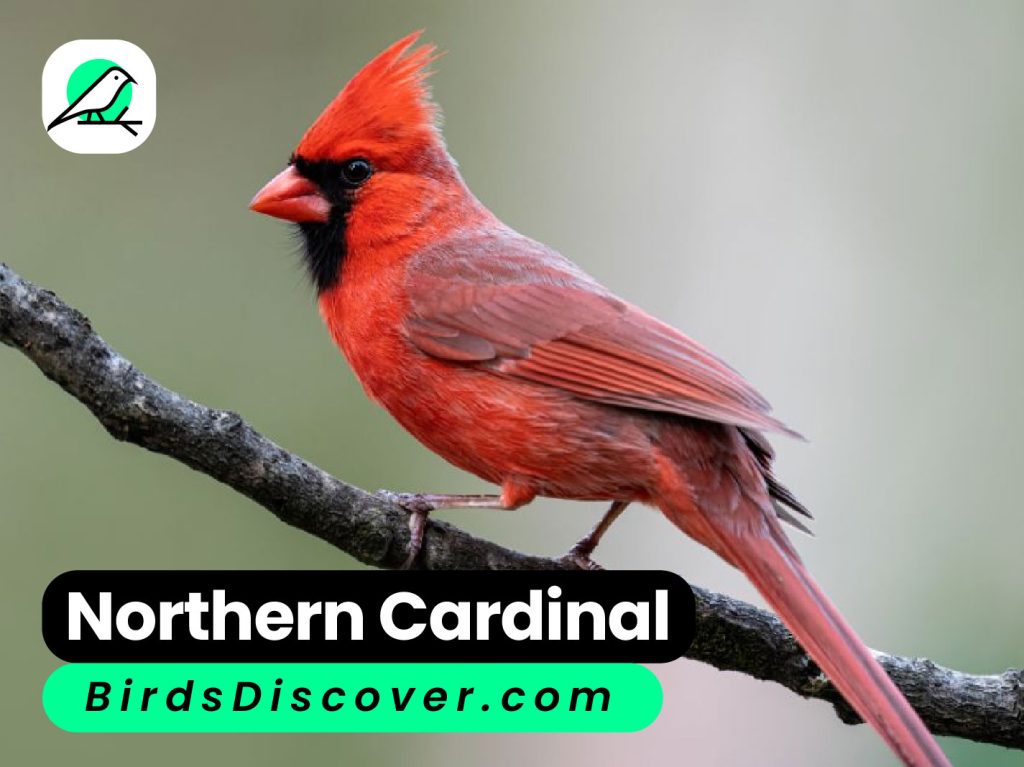
Northern Cardinal Biography, Sound
| Name: | Northern Cardinal |
|---|---|
| Scientific Name: | Cardinalis cardinalis |
| Habitat: | Woodlands, gardens, shrublands, urban areas |
| Size: | Length: 8-9 inches, Wingspan: 10-12 inches |
| Plumage: | Male: Brilliant red with black mask. Female: Subdued brown with touches of red. |
| Diet: | Seeds, fruits, insects, and occasionally small vertebrates |
| Behavior: | Monogamous, year-round residents in their territories, known for their melodious songs and distinctive calls. |
| Lifespan: | Average 3-5 years, up to 15 years in captivity |
| Notable Traits: | Bold coloration, powerful singing, strong territorial behavior. |
| Conservation Status: | Least Concern (Population stable) |
| Significance: | Iconic songbird symbolizing vitality and beauty in North American folklore. |
| Fun Fact: | The term “cardinal” originates from their resemblance to the red robes worn by Roman Catholic cardinals. |
Orange Bellied Parrot
The Orange-bellied Parrot, a critically endangered species native to Australia, boasts stunning green plumage accented by vibrant orange bellies. With fewer than 50 individuals left in the wild, conservation efforts are crucial to preserve this charismatic bird, facing threats from habitat loss and predation.
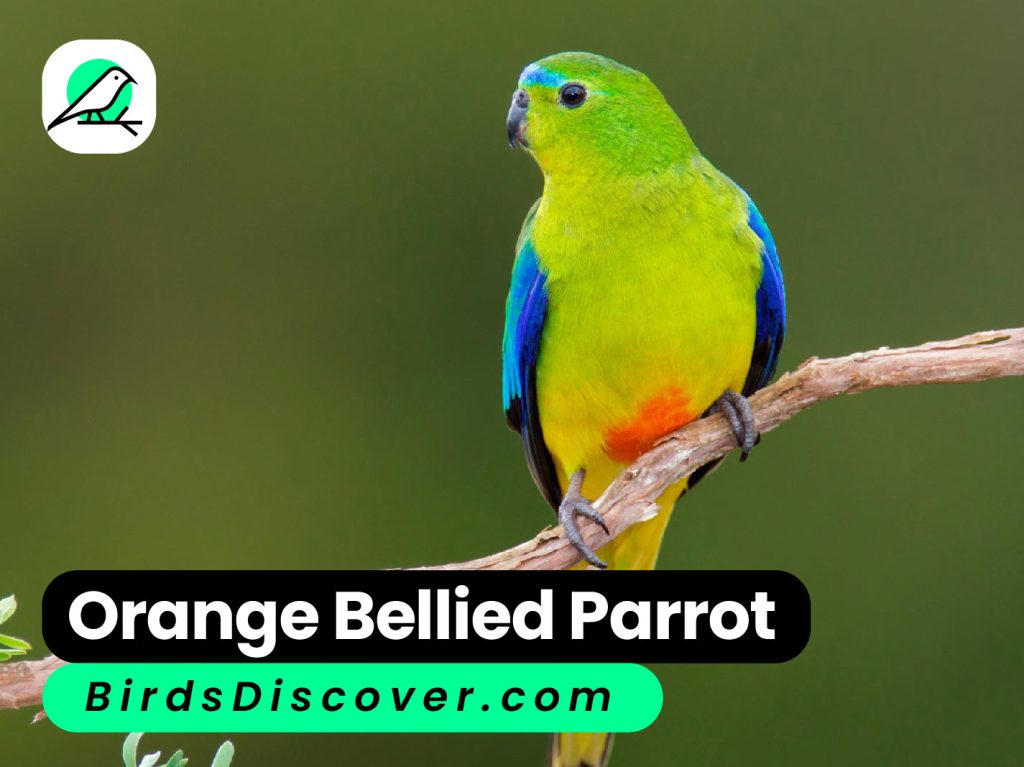
Orange Bellied Parrot Biography, Sound
| Name: | Orange-bellied Parrot |
|---|---|
| Scientific Name: | Neophema chrysogaster |
| Habitat: | Coastal regions and marshlands of southern Australia |
| Size: | Length: 20-21 centimeters |
| Plumage: | Vibrant green with yellow head, blue wings, and distinctive orange belly. |
| Diet: | Seeds, fruits, and nectar from coastal shrubs |
| Behavior: | Migratory, breeding in Tasmania during summer, migrating to mainland Australia in winter. Highly social, forming flocks during migration. |
| Lifespan: | Estimated 6-10 years in the wild |
| Notable Traits: | One of the world’s rarest parrots, facing imminent extinction due to habitat loss, predation, and disease. |
| Conservation Status: | Critically Endangered, with fewer than 50 individuals left in the wild. |
| Significance: | Symbol of Australia’s biodiversity crisis, highlighting the urgent need for habitat protection and conservation efforts. |
| Fun Fact: | Known for its distinctive call resembling a high-pitched “zit-zit-zit.” |
Western Tanager
The Western Tanager, a dazzling songbird of North America, boasts vibrant yellow plumage offset by contrasting black wings and a red-orange head. Found in coniferous forests during breeding season and migrating to lowlands in winter, it enchants with its melodious song and striking appearance, symbolizing the beauty of nature.

Western Tanager Biography, Sound
| Name: | Western Tanager |
|---|---|
| Scientific Name: | Piranga ludoviciana |
| Habitat: | Coniferous and mixed forests, mountainous regions of western North America |
| Size: | Length: 6-7 inches, Wingspan: 9-10 inches |
| Plumage: | Male: Bright yellow body, black wings, and a red-orange head. Female: Olive-yellow with dusky wings. |
| Diet: | Insects, fruits, and occasionally nectar |
| Behavior: | Migratory, nesting in trees, known for their melodious song and active foraging behavior. |
| Lifespan: | Average 4-5 years |
| Notable Traits: | Striking coloration, agile flyers, form loose flocks during migration. |
| Conservation Status: | Least Concern (Population stable) |
| Significance: | Vital for forest ecosystems, seed dispersal, and insect control. |
| Fun Fact: | Despite their bright plumage, they can be elusive due to their preference for dense foliage. |
Vermilion Flycatcher
The Vermilion Flycatcher, a striking songbird of the Americas, dazzles with its vibrant crimson plumage and elegant aerial displays. Found in open habitats like grasslands and deserts, it captures insects on the wing with remarkable agility. Its fiery beauty and acrobatic feats add charm to the natural landscape.
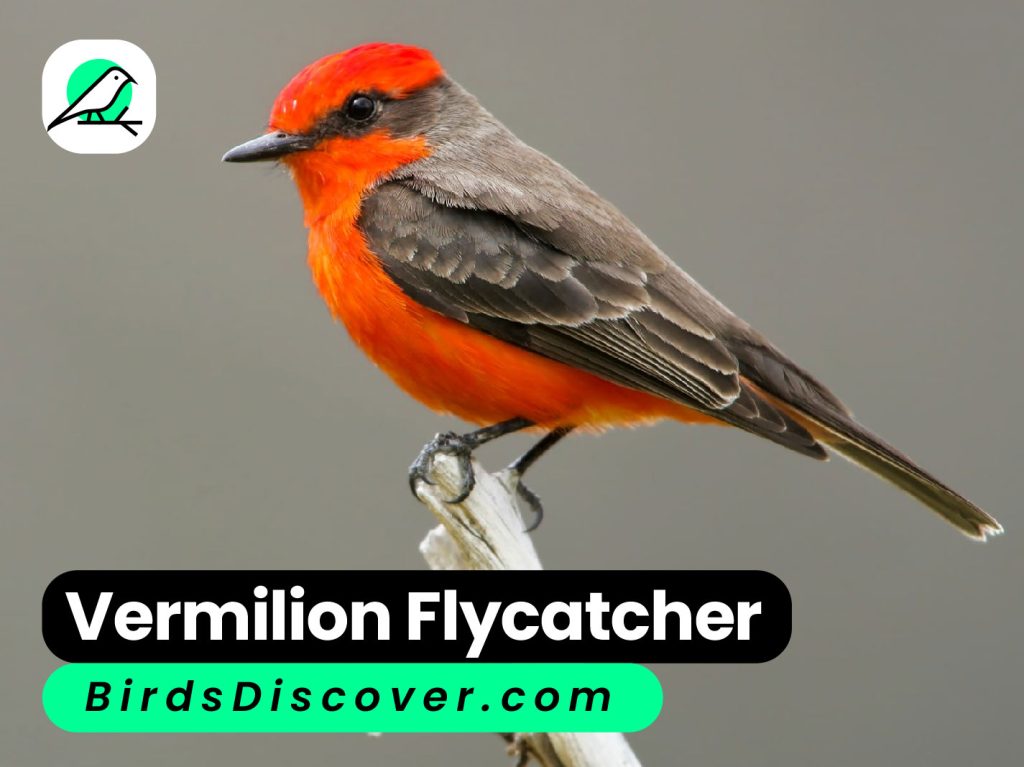
Vermilion Flycatcher Biography, Sound
| Name: | Vermilion Flycatcher |
|---|---|
| Scientific Name: | Pyrocephalus rubinus |
| Habitat: | Open habitats such as grasslands, deserts, and scrublands across the Americas |
| Size: | Length: 6-7 inches, Wingspan: 9-10 inches |
| Plumage: | Male: Brilliant vermilion red with black wings and tail. Female: Duller with pale underparts. |
| Diet: | Primarily insects caught in mid-air, occasionally berries |
| Behavior: | Agile aerial hunters, often perching on exposed branches to scan for prey. Migratory in northern regions. |
| Lifespan: | Average 3-5 years |
| Notable Traits: | Striking coloration, elaborate courtship displays, and distinctive calls. |
| Conservation Status: | Least Concern (Population stable) |
| Significance: | Indicator species for habitat health, valued for pest control in agricultural areas. |
| Fun Fact: | Despite its small size, it fearlessly defends its territory against larger birds and predators. |
American Kestrel
The American Kestrel, North America’s smallest falcon, is a master of the skies with its agile flight and keen hunting skills. Sporting a striking combination of blue-gray wings, russet back, and spotted belly, it preys on insects, small mammals, and birds, showcasing nature’s fierce elegance.
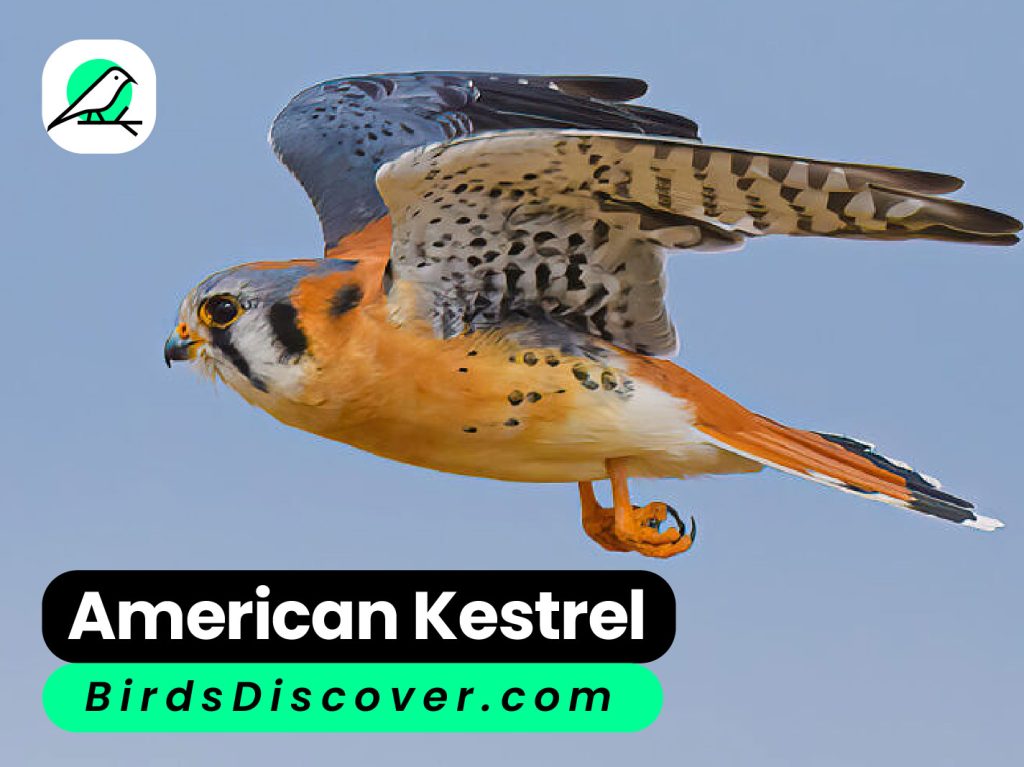
American Kestrel Biography, Sound
| Attribute | Information |
|---|---|
| Scientific Name | Falco sparverius |
| Description | Soft orange belly, blue-gray wings. |
| Size | Reaches no more than 14 inches in height. |
| Diet | primarily eats small creatures, including frogs, mice, voles, shrews, grasshoppers, crickets, butterflies, moths, dragonflies, beetles, and small birds. |
| Habitat and Range | Found throughout over the United States and southern half of Canada, with the exception of areas of Georgia, Texas, western Oregon, Washington state west of the Cascade Mountains, and California south of the Sierra Nevada range. |
| Vocalizations | The “klee” or “killy”, the “whine”, and the “chitter” are the three fundamental vocalizations. When the kestrel is unhappy or enthusiastic, the “klee” is typically given in a quick series: klee, klee, klee, klee. |
Spotted Towhee
The Spotted Towhee, a lively bird of North America, flaunts its jet-black plumage accented by white spots and vibrant reddish sides. Its distinctive call resonates through forests and shrublands as it forages for insects and seeds on the forest floor, adding a touch of charm to its woodland habitat.
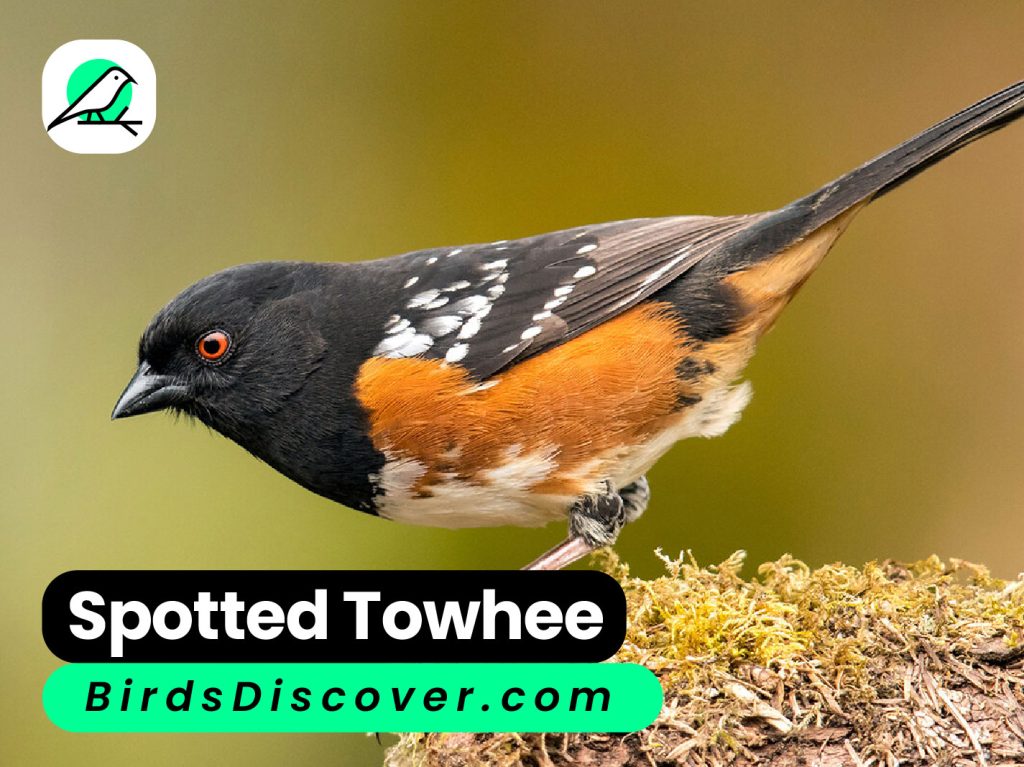
Spotted Towhee Biography, Sound
| Attribute | Information |
|---|---|
| Scientific Name | Pipilo maculatus |
| Description | Bird with orange bellies, white underparts, rust color spots on wings. |
| Habitat | Western parts of the United States, southern Canada. |
| Foraging Habits | Forages on ground or in low vegetation, noisily rummaging through dry leaves for food. |
| Nesting Habits | Nests on ground or low in bushes, seldom more than 1.5 m (4.9 ft) above ground. |
| Vocalization | Sings loudly with a sound similar to a cat’s meow. |
American Goldfinch
The American Goldfinch, a charming songbird of North America, delights with its bright yellow plumage and distinctive black cap. Often found in meadows, gardens, and woodlands, it flits gracefully among flowers, feeding on seeds and nectar. Its cheerful presence and melodious song brighten even the dullest of days.
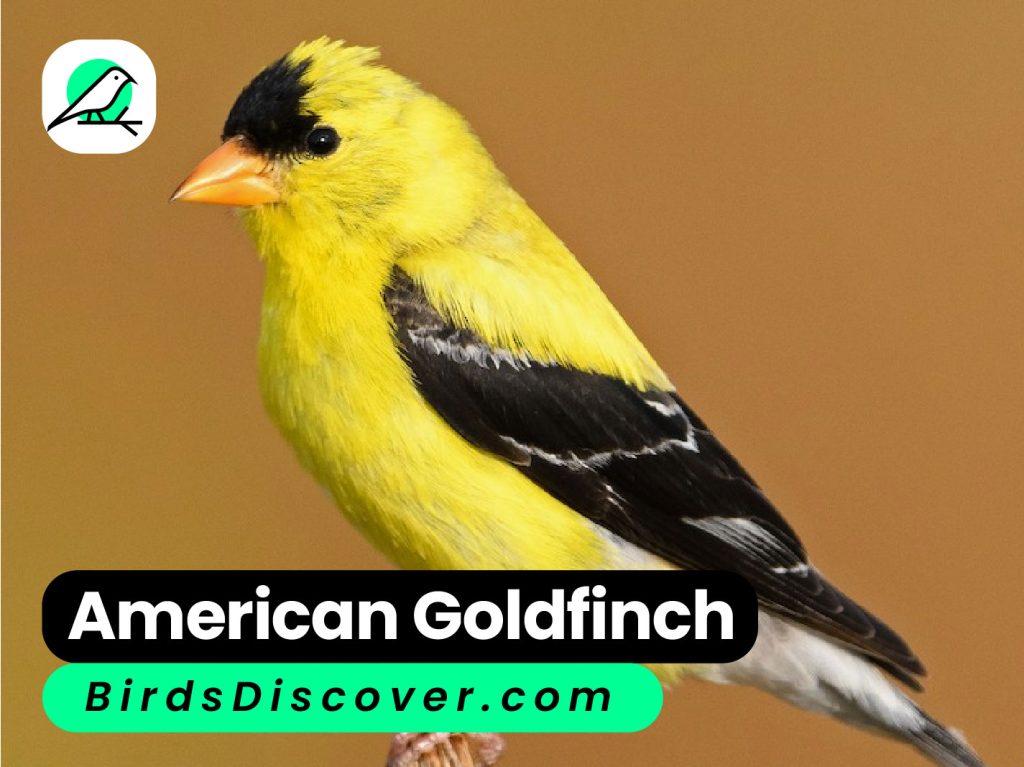
American Goldfinch Biography, Sound
| Name: | American Goldfinch |
|---|---|
| Scientific Name: | Spinus tristis |
| Habitat: | Meadows, fields, gardens, and open woodlands across North America |
| Size: | Length: 4.3-5 inches, Wingspan: 7.5-8.7 inches |
| Plumage: | Vibrant yellow with black wings, tail, and cap. Non-breeding males and females have duller plumage. |
| Diet: | Primarily seeds from plants such as thistles, sunflowers, and dandelions. Also feeds on insects, especially during breeding season. |
| Behavior: | Social birds often found in small flocks. Migratory, with populations in northern regions moving southward during winter. |
| Lifespan: | Average 3-6 years |
| Notable Traits: | Melodious song, acrobatic flight, distinctive flight call. |
| Conservation Status: | Least Concern (Population stable) |
| Significance: | Common backyard bird, appreciated for its beauty and cheerful presence. |
| Fun Fact: | The American Goldfinch is the state bird of Iowa, New Jersey, and Washington in the United States. |
Blackburnian Warble
The Blackburnian Warbler, a striking migratory bird of North America, boasts fiery orange throat and bold black markings. Found in coniferous forests during breeding season and migrating to Central and South America, it forages for insects with agile prowess. Its vibrant plumage and energetic presence illuminate the woodland canopy.
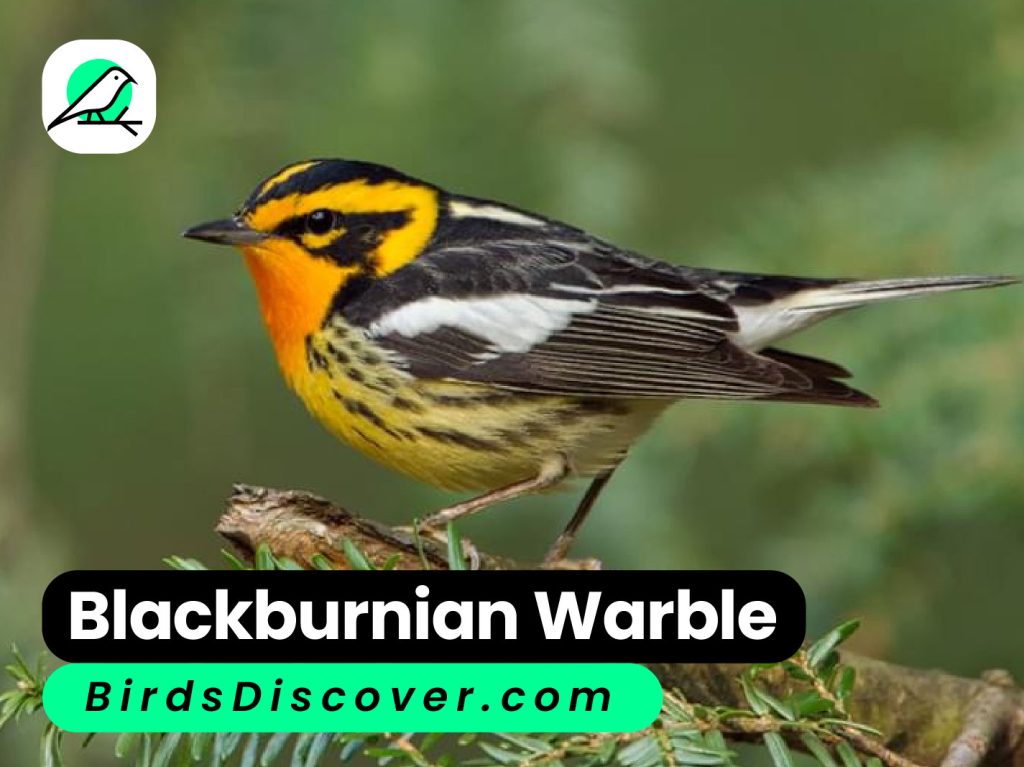
Blackburnian Warbler Biography, Sound
| Name: | Blackburnian Warbler |
|---|---|
| Scientific Name: | Setophaga fusca |
| Habitat: | Breeds in coniferous and mixed forests of North America, migrates to Central and South America during winter |
| Size: | Length: 4.3-5.1 inches, Wingspan: 7.5-9.1 inches |
| Plumage: | Vibrant orange throat, black face mask, and bold black streaks on back. Male: Brighter colors, female: Duller with less prominent markings. |
| Diet: | Primarily insectivorous, feeding on insects such as caterpillars, beetles, and spiders. |
| Behavior: | Energetic foragers, often flitting through tree canopies in search of prey. Migratory, forming mixed-species flocks during migration. |
| Lifespan: | Average 3-5 years |
| Notable Traits: | Striking plumage, distinctive high-pitched song, acrobatic flight. |
| Conservation Status: | Least Concern (Population stable) |
| Significance: | Indicator of healthy forest ecosystems, valued for its insect control role. |
| Fun Fact: | Despite its bright colors, the Blackburnian Warbler can be challenging to spot among the dense foliage of its forest habitat. |
American Woodcock
The American Woodcock, a peculiar shorebird of North America, is known for its unique mating display and cryptic plumage. Inhabiting forest clearings and wetlands, it probes the soil for earthworms with its long bill. Its intricate courtship dance, accompanied by twittering calls, marks the onset of spring in woodland habitats.
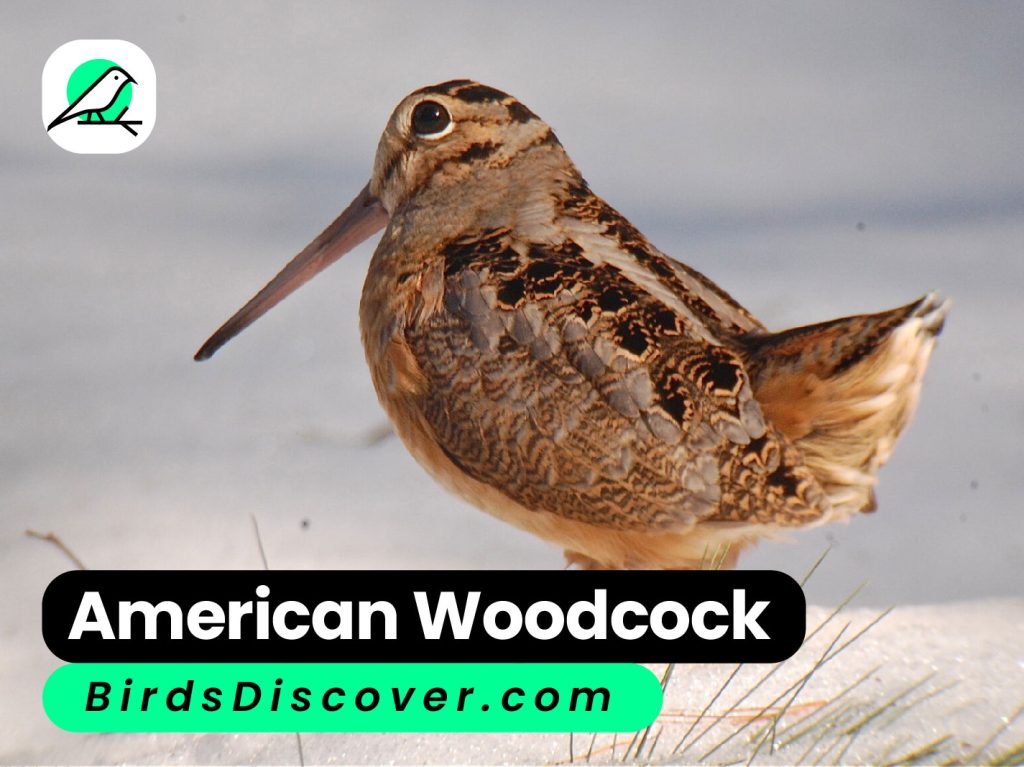
American Woodcock Biography, Sound
| Name: | American Woodcock |
|---|---|
| Scientific Name: | Scolopax minor |
| Habitat: | Forest clearings, wetlands, and brushy areas across North America |
| Size: | Length: 10-12 inches, Wingspan: 17-20 inches |
| Plumage: | Cryptic brown and gray mottled pattern, with a long, straight bill and large eyes positioned high on the head. |
| Diet: | Primarily earthworms, supplemented with insects and other invertebrates. |
| Behavior: | Nocturnal and crepuscular, performs elaborate courtship displays called “sky dances” during breeding season. |
| Lifespan: | Average 1-3 years |
| Notable Traits: | Unique mating display, excellent camouflage, distinctive peenting call. |
| Conservation Status: | Least Concern (Population stable) |
| Significance: | Indicator species for healthy forest ecosystems, valued game bird for hunters. |
| Fun Fact: | The American Woodcock’s eyes are positioned high on its head, allowing it to see 360 degrees horizontally and 180 degrees vertically, aiding in detecting predators. |
Eastern Bluebird
The Eastern Bluebird, with its serene azure plumage and rust-stained breast, epitomizes tranquility amid the verdant woodlands of eastern North America. This harbinger of spring, adored for its melodious warbles, symbolizes hope and renewal. Nestled within wooden cavities, it nurtures future generations, embodying resilience and familial devotion. Its presence enriches both the landscape and the human spirit, fostering a profound connection to nature’s beauty and the cycle of life.
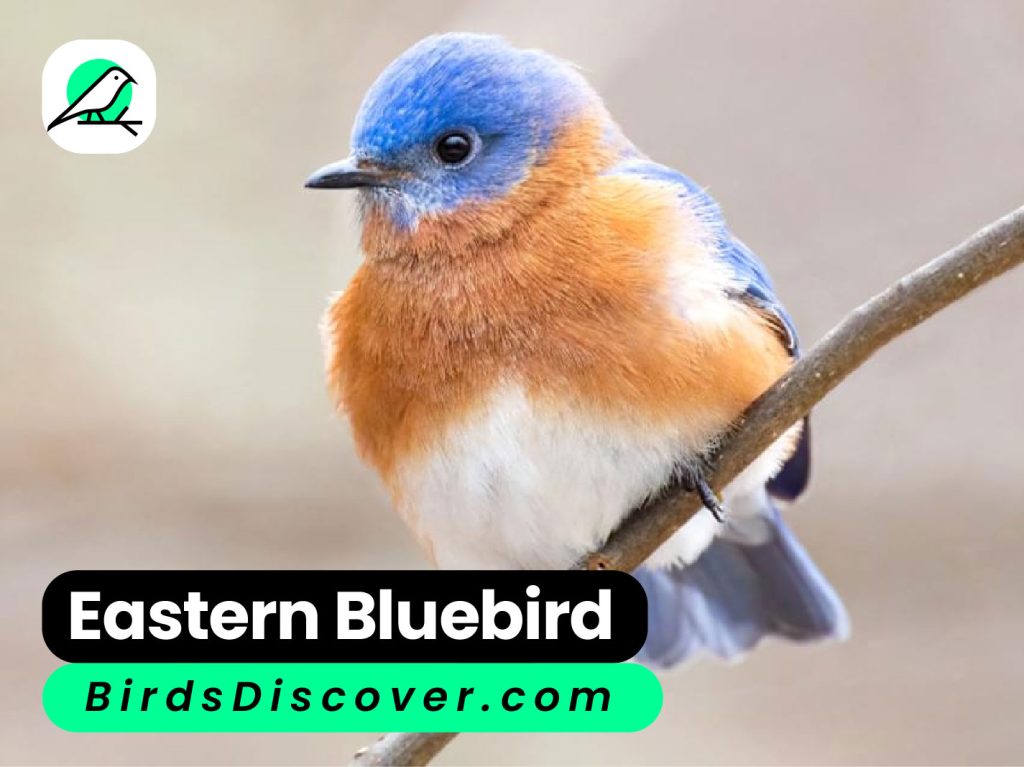
Eastern Bluebird Biography, Sound
| Name: | Eastern Bluebird |
|---|---|
| Scientific Name: | Sialia sialis |
| Habitat: | Open woodlands, meadows, and orchards across eastern North America |
| Size: | Length: 6.3-8.3 inches, Wingspan: 9.8-12.6 inches |
| Plumage: | Brilliant blue upperparts, rusty-orange breast, and white belly. Males sport deeper blue hues and more vibrant colors. |
| Diet: | Primarily insects, supplemented with fruits and berries, especially during winter. |
| Behavior: | Monogamous, cavity nesters, often utilizing human-made nest boxes. Migratory, with some populations staying year-round in southern regions. |
| Lifespan: | Average 2-6 years, up to 10 years in ideal conditions. |
| Notable Traits: | Melodious song, vibrant plumage, symbolic of hope and renewal. |
| Conservation Status: | Least Concern (Population stable) |
| Significance: | Valued for insect control, cultural symbolism, and contribution to ecosystem health. |
| Fun Fact: | Eastern Bluebirds often form small flocks during winter, roosting together for warmth and safety. |
Varied Thrush
The Varied Thrush, adorned in rich shades of slate gray and burnt orange, graces the Pacific Northwest’s mossy forests with its ethereal presence. Its haunting flute-like song echoes through ancient woodlands, evoking a sense of mystery and reverence. A symbol of wilderness, it epitomizes the harmony between bird and forest.
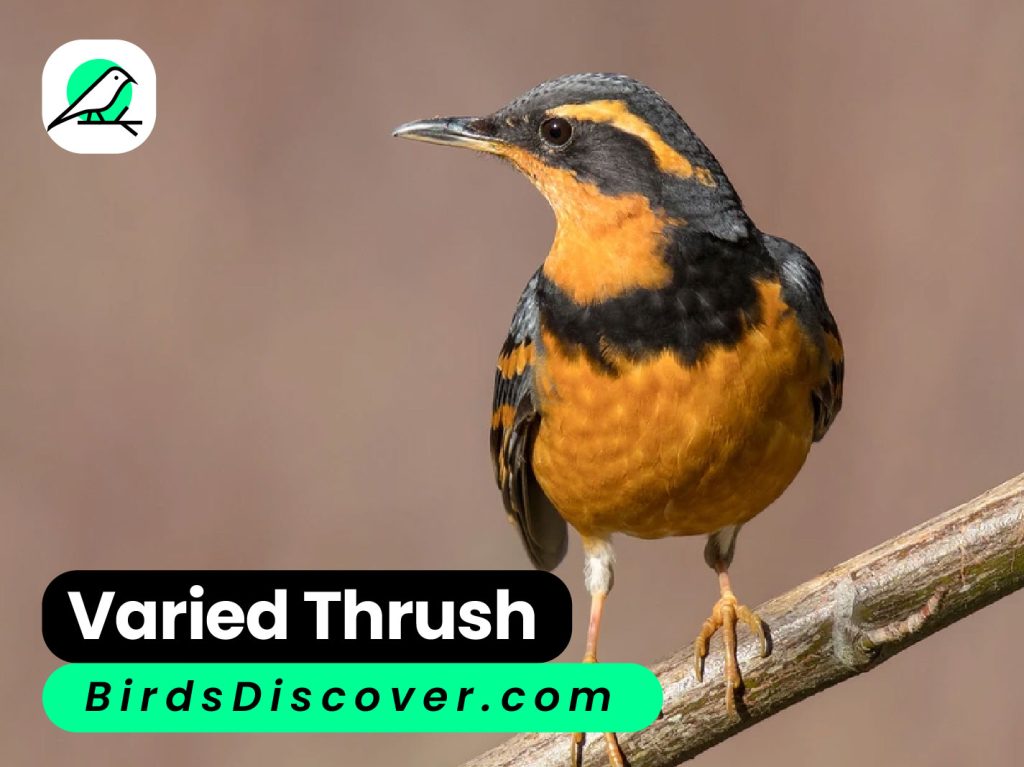
Varied Thrush Biography, Sound
| Name: | Varied Thrush |
|---|---|
| Scientific Name: | Ixoreus naevius |
| Habitat: | Dense coniferous forests, particularly in the Pacific Northwest of North America |
| Size: | Length: 8-10 inches, Wingspan: 13-15 inches |
| Plumage: | Slate gray upperparts, burnt orange breast, and bold black markings. Females have duller colors. |
| Diet: | Omnivorous, feeding on insects, berries, seeds, and occasionally small amphibians or reptiles. |
| Behavior: | Solitary or found in pairs, secretive and often heard more than seen. Migratory, moving to lower elevations during winter. |
| Lifespan: | Average 3-5 years |
| Notable Traits: | Melodious flute-like song, cryptic plumage for camouflage in forest environments. |
| Conservation Status: | Least Concern (Population stable) |
| Significance: | Indicator species for mature, old-growth forests, valued for its role in forest ecosystems. |
| Fun Fact: | The Varied Thrush’s song is often likened to the sound of a distant flute, adding an enchanting quality to its woodland habitat. |
Red Breasted Nuthatch
The Red-breasted Nuthatch, a charismatic resident of North America’s coniferous forests, captivates with its striking red underbelly and distinctive nasal call. Scaling tree trunks with ease, it forages for insects and seeds, embodying resilience and adaptability in its woodland domain, enriching the forest with its vibrant presence.
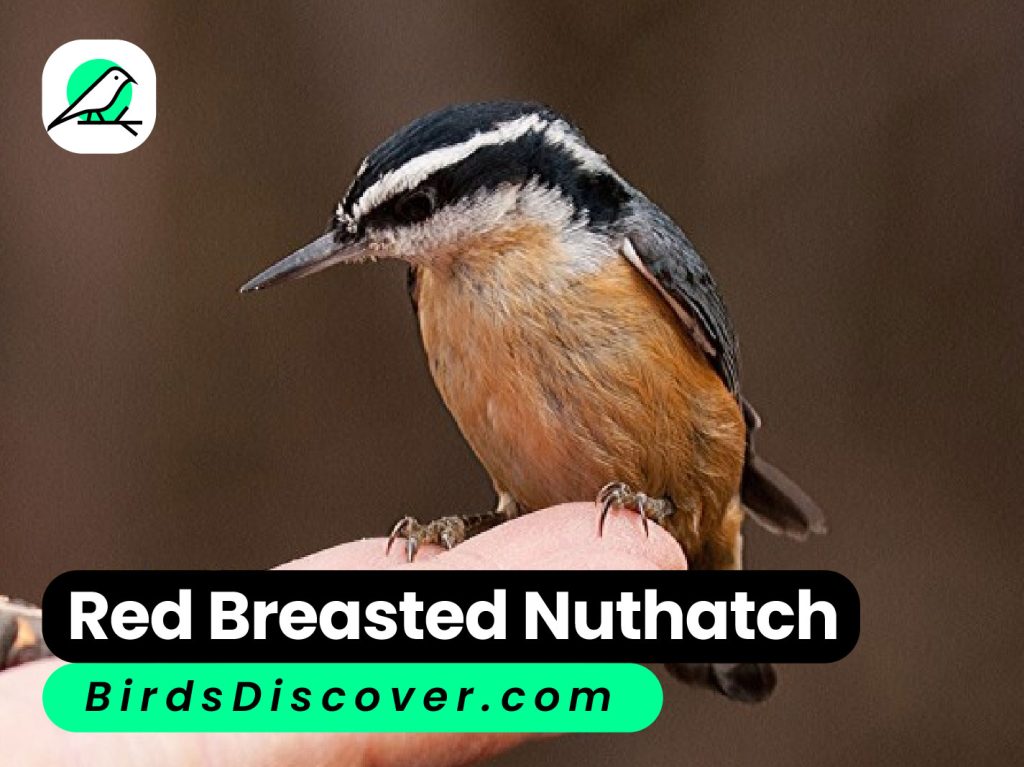
Red Breasted Nuthatch Biography, Sound
| Name: | Red-breasted Nuthatch |
|---|---|
| Scientific Name: | Sitta canadensis |
| Habitat: | Coniferous forests across North America, including spruce, pine, and fir forests |
| Size: | Length: 4.3-5.1 inches, Wingspan: 7.5-9.1 inches |
| Plumage: | Blue-gray upperparts, rusty-red underparts, and distinctive black eyestripe. |
| Diet: | Primarily insectivorous, also consumes seeds and nuts, often caching food for later consumption. |
| Behavior: | Agile climbers, frequently observed moving head-first down tree trunks in search of food. Often seen in mixed-species foraging flocks. |
| Lifespan: | Average 2-3 years, up to 9 years in captivity. |
| Notable Traits: | Nasal call resembling a tin horn, acrobatic foraging behavior, frequent visits to bird feeders. |
| Conservation Status: | Least Concern (Population stable) |
| Significance: | Indicator of forest health, valuable for pest control in coniferous forests. |
| Fun Fact: | The Red-breasted Nuthatch is known to wedge large seeds or nuts into tree bark crevices and hammer them open with their bill, a behavior known as “hatcheting.” |
Azure Kingfisher
The Azure Kingfisher, a jewel of Australia’s waterways, dazzles with its vibrant azure plumage and bold orange underparts. Hovering with remarkable agility over rivers and streams, it dives with precision to snatch fish from the water’s surface. Its iridescent beauty and aquatic prowess epitomize the allure of Australia’s biodiversity.
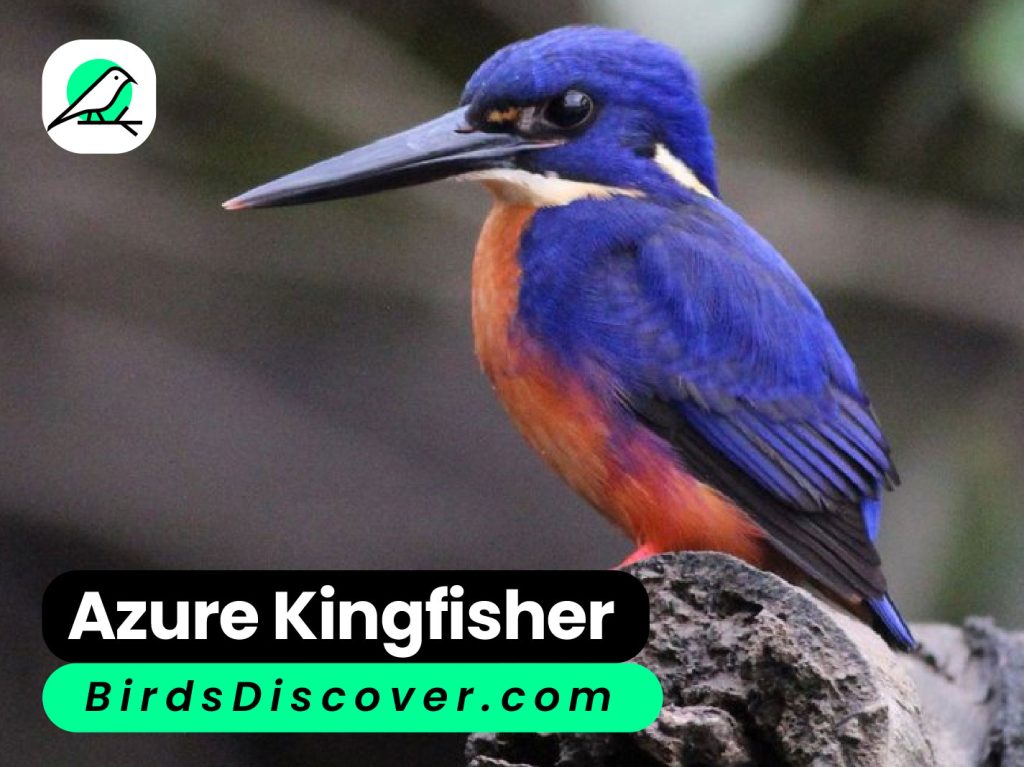
Azure Kingfisher Biography, Sound
| Name: | Azure Kingfisher |
|---|---|
| Scientific Name: | Ceyx azureus |
| Habitat: | Rivers, streams, and mangrove-lined waterways across northern and eastern Australia, as well as parts of Papua New Guinea and Indonesia |
| Size: | Length: 17-19 centimeters |
| Plumage: | Vibrant azure blue upperparts, rich orange underparts, and white throat. |
| Diet: | Primarily fish, supplemented with aquatic insects and crustaceans. |
| Behavior: | Perches on overhanging branches or rocks, diving with remarkable speed and precision to catch prey. Often seen in pairs or small family groups. |
| Lifespan: | Average 5-10 years |
| Notable Traits: | Striking coloration, aerial agility, distinctive high-pitched calls. |
| Conservation Status: | Least Concern (Population stable) |
| Significance: | Iconic symbol of Australia’s waterways, valued for its role in controlling fish populations. |
| Fun Fact: | The Azure Kingfisher’s vivid plumage serves as camouflage against the reflective surface of the water, aiding in stealthy hunting. |
Elegant Euphonia
The Elegant Euphonia, a jewel of Central and South American forests, captivates with its glossy blue-black plumage and vibrant yellow underparts. Found in dense vegetation, it forages for fruits and insects, its melodious songs echoing through the canopy. Its elegance epitomizes the splendor of tropical avifauna.
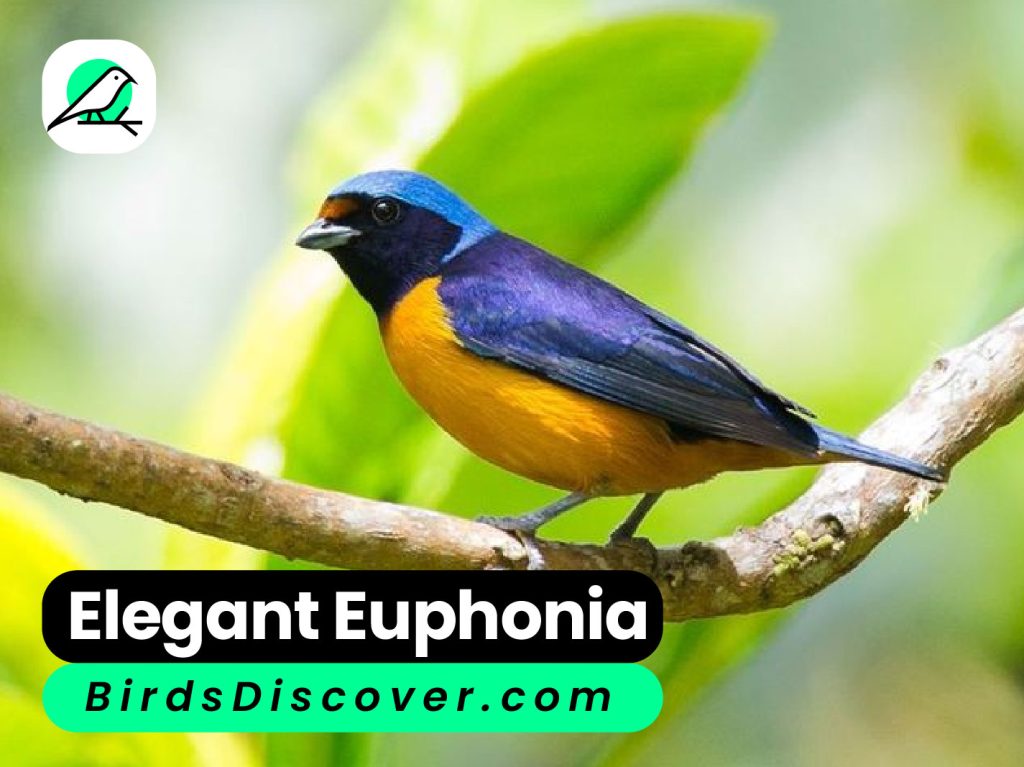
Elegant Euphonia Biography, Sound
| Name: | Elegant Euphonia |
|---|---|
| Scientific Name: | Euphonia elegantissima |
| Habitat: | Dense forests, wooded areas, and gardens throughout Central and South America |
| Size: | Length: 10-12 centimeters |
| Plumage: | Glossy blue-black upperparts, bright yellow underparts, with distinctive blue patches on wings and tail. |
| Diet: | Primarily frugivorous, feeding on a variety of fruits, supplemented with insects and small seeds. |
| Behavior: | Often found in pairs or small groups, foraging actively in dense vegetation. Males sing to establish territories and attract mates. |
| Lifespan: | Average 3-5 years |
| Notable Traits: | Vibrant plumage, melodious songs, agile flight. |
| Conservation Status: | Least Concern (Population stable) |
| Significance: | Indicator of healthy forest ecosystems, valued for its role in seed dispersal. |
| Fun Fact: | The Elegant Euphonia’s name derives from the Greek word “euphonia,” meaning melodious voice, reflecting its beautiful and varied songs. |
Conclusion
In the kaleidoscope of avian diversity, orange-bellied birds stand out with their vibrant plumage and melodious calls. From the fiery Rufous Hummingbird to the elusive Orange-bellied Parrot, these birds captivate with their beauty and significance in their respective ecosystems. Their varied sounds add rhythm to the natural world, reminding us of the delicate balance of life in the wild. As stewards of the environment, it’s our responsibility to ensure their habitats are preserved for generations to come, so that the symphony of orange-bellied birds continues to echo through the landscapes they call home.
FAQS
1. What is the significance of orange bellies in birds?
Orange bellies serve various purposes, from attracting mates to camouflage and signaling territorial dominance. In many species, vibrant colors indicate health and fitness, crucial for reproductive success.
2. How do orange-bellied birds contribute to ecosystem health?
Orange-bellied birds play essential roles as pollinators, seed dispersers, and indicators of habitat quality. Their presence often signifies the health of ecosystems, as they rely on diverse habitats and are sensitive to environmental changes.
3. What are some common threats to orange-bellied bird populations?
Habitat loss, pollution, climate change, and invasive species pose significant threats to orange-bellied birds. Human activities such as deforestation and urbanization disrupt their habitats, while climate change alters migration patterns and food availability.
4. What do orange-bellied birds sound like?
The sounds of orange-bellied birds vary widely, from the delicate trill of hummingbirds to the melodious songs of thrushes and warblers. Some species produce sharp calls or whistles, while others engage in complex vocalizations during courtship displays.
5. How can I help conserve orange-bellied bird species?
You can contribute to orange-bellied bird conservation by supporting habitat restoration efforts, participating in citizen science projects, advocating for protected areas, and reducing your ecological footprint. Additionally, providing bird-friendly landscaping and minimizing pesticide use can create safer environments for these birds.

